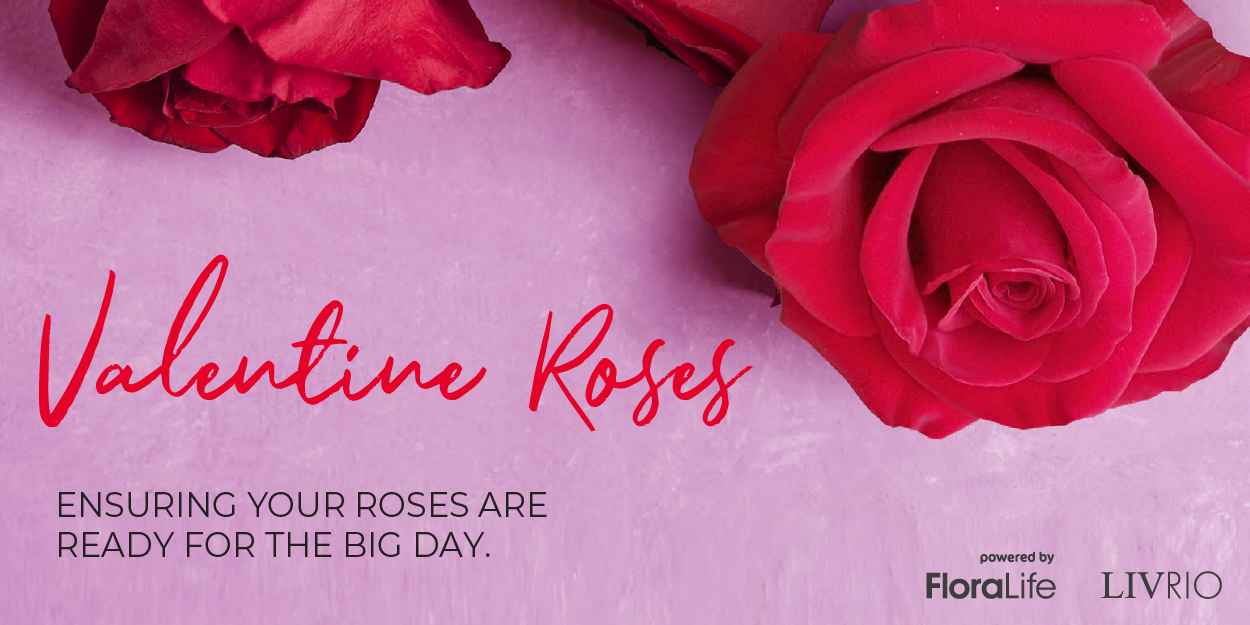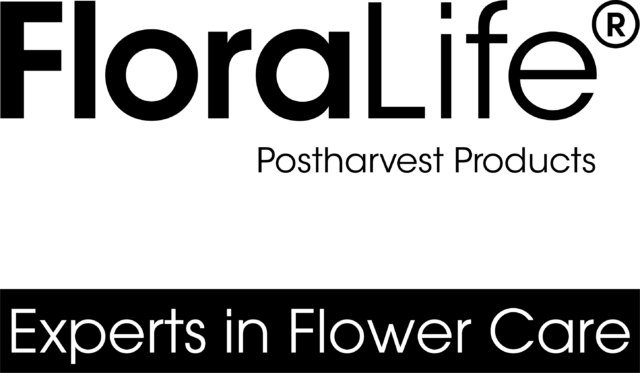Valentine Roses: Ensuring Your Roses are Ready for the Big Day.
LivRio Magazine January 2025, powered by FloraLife

As stressful as holiday peaks can be for florists, because they occur on a set calendar date, they also allow florists the opportunity to plan ahead and exert more control over their flower stocks than during other times of the year.
Bearing in mind that many consumers only purchase flowers during key events or holidays, ensuring that the flowers you supply are of optimum quality is vital to securing repeat business. In short, peaks are not a time to take risks with your flowers.
There are many factors that affect flower life, such as growing conditions, variety choice, transit & storage temperatures, and post-harvest care just to name a few. By taking a few meaningful steps, you can mitigate the risks and ensure that each customer receives beautiful flowers with good vaselife, and therefore maximize the consumer’s experience.
Develop a good relationship with your flower grower/supplier
A good and reliable flower grower is worth their weight in gold, not only will they cultivate the most aesthetically pleasing cultivars, but they will also perform their own vaselife trials to ensure the flowers they grow also meet consumer expectations. In addition, they will have pre and post-harvest protocols in place which ensure each stem is handled correctly, stored at the correct temperature, and treated with the right post-harvest treatments and flower food.
Train staff on proper flower care
You may be relying on additional/temporary help during peaks, or your regular employees may appreciate a refresher course on the correct care and handling of flowers. Remember, you’re only as strong as your weakest link so ensuring everyone is on the same page when it comes to flower care is vital. For free online care and handling resources, check the links at the bottom of this article.
Choose the right variety
Gertrude Stein may have said ‘A rose is a rose is a rose’ but when it comes to actual roses, nothing could be farther than the truth. Not all rose varieties behave the same way. Choose the varieties you know perform best for you, this could be the ones which appeal most to your customers, ones which travel the best, or simply the ones which last the longest and open the most. Know your varieties by name and be choosy about your varieties.
Keep flowers cold
Unless you’re storing tropicals, all flowers should be stored at 34 – 38° F. If you receive your roses in dry, they can actually stay as such for a couple of days if the proper temperatures are maintained.
Hydration, hydration, hydration
All dry packed flowers should be hydrated at least 24hrs before you are ready to use them. Start with a clean bucket with correctly dosed hydration solution, cut approx. 1 inch of stem using a clean sharp tool. Not overfilling buckets, and allowing air circulation around the stems is key to preventing botrytis.
Care and Handling Information
Hydration after harvest
- Start processing with a clean bucket, sanitized with FloraLife® D.C.D.® Cleaner.
- Cut stems about 1 – 2 inches before placing in a hydration solution such as FloraLife® HydraFlor® or Floralife® Express 100.
- Remove any leaves that are below the hydration solution.
- Hydrate in chilled solution in the flower cooler (34 – 38° F).
- Limit the time between harvest and placing in the cooler to less than one hour.
Shipping and Storage
- Shipping and storage temperatures should be 34 – 38° F.
Re-hydration at Store Level
- Start processing with a clean bucket, sanitized with FloraLife® D.C.D.® Cleaner.
- If received dry packed, conditioning of stem ends is recommended to prevent blockage and promote uptake. Cut approximately 1” or more off stems. Use clean, sanitized clippers or knife, and treat with FloraLife® Quick Dip.
- Place flowers in a flower food holding solution such as FloraLife® Express Ultra 200. Do not put flowers directly in metal/galvanized buckets. Use clean, high-quality water that has not been treated with a water softener.
- Store in a cooler at 34 – 38° F with 75 – 85% relative humidity.
- Allow minimum 2 hours to hydrate placing buckets in an area with good airflow.
- Always remember FIFO (first in/first out) when rotating roses or any other flowers.
Vase Care
- Remove any foliage or flowers that would be below the flower food solution level.
- If received dry, cut approximately 1” or more off stems. Use clean, sanitized clippers or knife, and treat with FloraLife® Quick Dip.
- Immediately place flowers in properly dosed vase solutions (flower food and water) containing FloraLife Crystal Clear® Flower Food (the perfect solution for clear vases), or FloraLife® Express 300 Flower Food (the no-cut premium solution).
Special Considerations
- The outer petals of roses tend to be quite different from the inner petals, these are known as ‘guard petals’ and are a naturally occurring part of the rose. Many florists choose to remove the guard petals for aesthetic reasons, but they can also add a naturalistic element if left untouched. To remove them, simply hold each petal firmly and give them a gently tug to remove.
- Red roses can sometimes display blackening at the petals’ edge. This occurs during the growing process when cold nighttime temperatures and high daytime temperature & high levels of sunlight occur together. To prevent this, growers should cover the flower heads from the time they begin to form until harvest.
*Product availability depends upon geographical region
